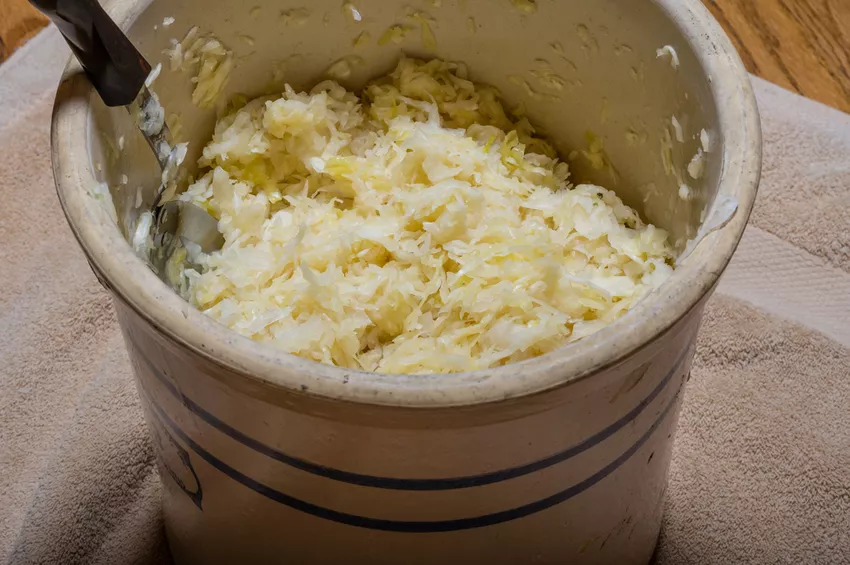Homemade sauerkraut is one of the more tricky things to do when preserving, but with the necessary instructions and absolute cleanliness it is easy to do.
 Purity is important when making sauerkraut
Purity is important when making sauerkraut
Bring in the sauerkraut for storage
About 10 kg of white cabbage and 250 g of curing salt are required for six liter jars of sauerkraut. The jars must be sterile, especially when making sauerkraut, otherwise the lactic acid fermentation will be impaired. If harmful bacteria are present, the herb will spoil. So sterilize your glasses just before you use them by boiling them or heating them in the oven at 100 degrees for ten minutes.
In order for the lactic acid fermentation to work well, divide the amount of cabbage into several smaller portions.
Prepare the herb
- Clean the cabbage, cut off wilted and damaged leaves.
- Quarter the cabbage. If it is particularly large, it can also be an eighth.
- Now cut out the white stalk. The hard leaf veins in the outer leaves are also removed.
- Cut the cabbage pieces into fine strips. Use a sharp knife for this, it is easier with a planer.
- Put the cabbage strips in a large sieve and wash them thoroughly. Drain well.
- Then, pour the chopped cabbage into a large clay pot, glass pot, or food-safe plastic bucket.
Do not use a metal container.
- Mix the cabbage with the salt, about 3 tablespoons per 2 kg of cabbage. Mix it all up well with your hands. You can also use the potato masher to mix the mixture. It is important that the cell walls in the vegetable break open and release the juice.
- Squeeze the cabbage firmly in the container so the juice collects above the cabbage.
- If the cabbage chips haven't produced enough juice, you can help by covering them with brine. The lye is made from 22.5 g of pickling salt and 1 liter of water. Boil everything together until the salt has dissolved. Pour the cooled lye over the cabbage.
- Give the herb a good squeeze and then place a suitable plate or board on top and weigh it down with a clean rock or large glass filled with water. It is important that the cabbage is pressed further and is covered with brine.
- Cover the pot with a clean tea towel and refrigerate.
After a short time, fermentation begins. It lasts between three days and six weeks. Bubbles form in the pot. When no more bubbles form, fermentation is complete.
You can preserve the finished sauerkraut in smaller jars after fermentation. Again, pay attention to extreme cleanliness. Wake up in the preserving machine at 90 degrees for half an hour. Set the oven to 175 degrees. As soon as bubbles form in the glass, switch off and leave the glasses in the oven for 30 minutes.